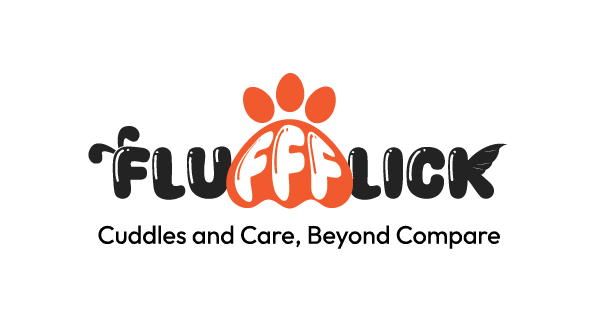If you have a passion for animals and a knack for pet care, starting a pet-sitting business can be a rewarding and profitable venture. However, like any business, success requires careful planning, organization, and dedication. Here’s a step-by-step guide to launching a successful pet-sitting business, covering everything from creating a business plan to securing startup funding.
1. Develop a Pet Sitting Business Plan
A solid business plan is the foundation of any successful enterprise. Your pet-sitting business plan should outline your goals, target market, services offered, pricing, and marketing strategies. It should also include a detailed financial plan, covering initial costs, ongoing expenses, and projected revenue. A well-crafted business plan will not only guide your actions but also help attract investors if you seek external funding.
Key Components of Your Business Plan:
- Executive Summary: An overview of your business, including your mission statement and objectives.
- Market Analysis: Research your target market, including demographics and competition.
- Services Offered: A detailed list of services, such as daily pet visits, overnight stays, and special care for pets with medical needs.
- Pricing Strategy: Competitive pricing based on market research and the services you offer.
- Marketing Plan: Strategies to attract and retain clients, including online marketing, word-of-mouth, and partnerships with local pet stores or veterinarians.
- Financial Plan: A detailed outline of startup costs, ongoing expenses, and revenue projections.
2. Choose the Right Legal Structure for Your Pet Sitting Business
Choosing the appropriate legal structure is crucial for your business. The legal structure you select will determine your tax obligations, liability, and regulatory requirements. Common options for pet sitting businesses include:
- Sole Proprietorship: Simple to set up and maintain, but you’re personally liable for all business debts and obligations.
- Limited Liability Company (LLC): Offers limited liability protection, meaning your assets are protected from business debts. An LLC also provides tax flexibility and is relatively easy to maintain.
- Partnership: If you’re starting the business with a partner, a partnership structure might be appropriate, though it’s essential to clearly define each partner’s responsibilities and share of profits.
- Corporation: A more complex structure that provides the most protection from personal liability but comes with additional regulations and paperwork.
Consult with a legal professional to determine the best legal structure for your pet-sitting business based on your specific needs and goals.
3. Secure Startup Funding for Your Pet Sitting Business
Launching a pet-sitting business may require some initial investment, especially if you plan to offer high-end services or cover a wide area. You’ll need to account for costs such as licensing, insurance, marketing, equipment, and possibly renting office space. Here are some ways to secure startup funding:
- Personal Savings: Many small business owners use personal savings to fund their startup.
- Small Business Loans: Banks and credit unions offer loans tailored for small businesses, which can provide the capital needed for startup costs.
- Grants: Look for grants specifically designed for small businesses or pet-related ventures.
- Crowdfunding: Platforms like Kickstarter or GoFundMe allow you to raise funds from the public, especially if you can offer unique rewards or incentives.
- Investors: Consider bringing in investors who believe in your business plan and are willing to provide financial backing in exchange for equity or a share of the profits.
4. Obtain Necessary Licenses and Insurance
Before you start offering pet-sitting services, ensure that you have all the necessary licenses and permits required in your area. Licensing requirements vary by location, so check with your local government or small business administration.
Insurance is also essential for protecting your business. Consider obtaining the following types of insurance:
- General Liability Insurance: This covers legal costs and damages if your business is sued for injury or property damage.
- Pet Sitter Insurance: Specifically designed to cover incidents involving the pets under your care, such as injury, illness, or escape.
- Bonding: Offers protection if an employee steals or damages a client’s property.
5. Market Your Pet Sitting Business
Effective marketing is key to attracting clients. Start by building a professional website that highlights your services, rates, testimonials, and contact information. Utilize social media platforms like Instagram, Facebook, and LinkedIn to promote your business and engage with potential clients. Offering promotions or discounts for new customers can also help you build your client base.
Networking with local pet-related businesses, such as groomers, veterinarians, and pet stores, can also lead to referrals. Don’t forget to leverage online reviews and testimonials from satisfied clients, as word-of-mouth is one of the most powerful tools in the pet care industry.
6. Provide Exceptional Service
Once your business is up and running, your success will largely depend on the quality of service you provide. Build strong relationships with your clients by being reliable, trustworthy, and attentive to their pets’ needs. Regular communication, updates, and going the extra mile to ensure pets are well-cared for will help you retain clients and earn referrals.
Conclusion
Starting a pet-sitting business requires careful planning, from developing a comprehensive pet-sitting business plan to securing the necessary funding and legal structure. With the right approach and dedication to providing top-notch pet care, you can build a successful and fulfilling business that benefits both you and the pets you care for.

